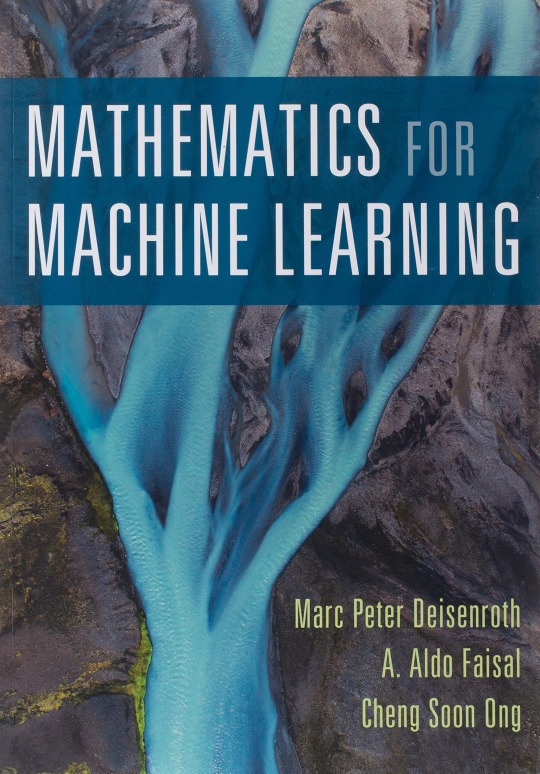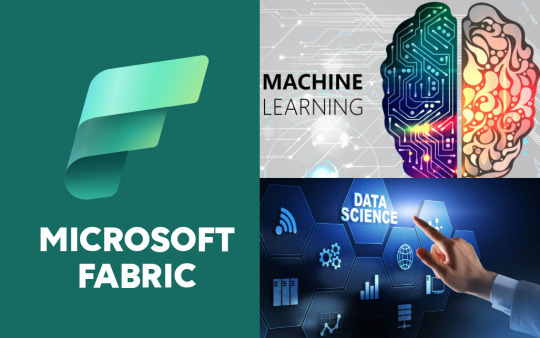#Linear Regression
Explore tagged Tumblr posts
Text
Probably

a stepwise modell with small R^2.
9 notes
·
View notes
Text

2023-04-25 • 16/100 days of NLP
Finished up on the summary of linear regression as a form of prep for the fall classes. Currently, the coding part is not that clear to me but it should become easier as I code more.
#100 days of nlp#100 days of studying#studyblr#studying#study motivation#natural language processing#machine learning#linear regression
48 notes
·
View notes
Text

Anything but collinearity
#student memes#uni memes#university memes#student life#dissertation#dissertation memes#dissertation life#data analysis#psychology student#university#psych student#student#uni life#research project#final year project#stats#statistics#university life#university student#research memes#research life#regression#spss#research methods#linear regression#statistical analysis#correlation#ineedfairypee#fairypeememes#I Need Fairy Pee
3 notes
·
View notes
Text
Predicting Wine Quality
Predicting Wine Quality by comparing Linear Regression with Machine Learning techniques. Comparing Linear Regression with kNN, Decision Tree and Random Forest with Bayesian Inference to Predict Wine Quality in Python. We use python and Jupyter Notebook to download, extract, transform and analyze data about the physicochemical properties which make up wine, and use them to predict…

View On WordPress
#analysis#analytics#autodidacte#bayes#bayesian#data#data science#Jupyter Notebook#k nearest-neighbors#knn#linear regression#machine learning#ml#predictive analysis#Python#science#SQL#statistical inference#statistics#wine#wine science#wine studies
5 notes
·
View notes
Text
Book of the Day -Mathematics for Machine Learning
Today’s Book of the Day is Mathematics for Machine Learning, written by Marc Peter Deisenroth, Aldo Faisal, and Cheng Soon Ong in 2020 and published by Cambridge University Press. Marc Peter Deisenroth is DeepMind Chair in Artificial Intelligence at the Department of Computer Science, University College London. His research areas include data-efficient learning, probabilistic modeling, and…

View On WordPress
#Aldo Faisal#Artificial Intelligence#Book#Book Of The Day#book recommendation#book review#book suggestions#books#bookstagram#booktok#Cambridge#Cambridge University Press#chatbot#Cheng Soong Ong#Gaussian mixture models#linear regression#Machine Learning#Marc Peter Deisenroth#Mathematics#Mathematics for Machine Learning#Maths#principal component analysis#Raffaello Palandri#support vector machines
7 notes
·
View notes
Text
woo! linear regressions!
I genuinely enjoy doing bad linear regressions as a joke, like predicting something from them that makes zero fucking sense whatsoever
Can't think of an example but I know I've done some funny bullshit before

That's not how demographics work.
167K notes
·
View notes
Text
What is Linear Regression? – Its Types, Challenges, and Applications | USAII®

Enhance your understanding of linear regression and learn about the working, applications, and basic challenges of this machine learning algorithm.
Read more: https://shorturl.at/EW7mj
Linear Regression, linear regression model, linear regression tool, machine learning (ML) algorithms, AI professionals, AI analytics, AI platforms, AI models, Machine learning certifications, AI Certification programs
0 notes
Text
Maths and Evolutionary Biology
Maths and Evolutionary Biology Mathematics is often utilised across many fields – lets look at an example from biology, evolutionary biology and paleontology, in trying to understand the development of homo-sapiens. We can start with a large data set which gives us the data for mammal body mass and brain size in grams (downloaded from here). I then tidied up this to remove the rows with NA…

View On WordPress
0 notes
Text
DESCIFRANDO LA RELACIÓN ENTRE INGRESOS Y CONSUMO DE ALCOHOL: EL MISTERIO DEL COEFICIENTE DE CORRELACIÓN DE PEARSON
En esta entrada, exploraremos el coeficiente de correlación de Pearson, centrándonos en la relación entre el ingreso total anual y el consumo total anual estimado de alcohol.
Análisis de los Datos
Comenzamos creando una copia de nuestro conjunto de datos y eliminando las filas con entradas NaN, ya que el coeficiente de correlación no puede calcularse con datos faltantes.

Luego, procedimos a realizar un diagrama de dispersión de estas variables.

Observamos que el comportamiento de las variables no es lineal; de hecho, parece más apropiado considerar un ajuste logarítmico para establecer una regresión entre ellas. Este será un tema que exploraremos en futuras entradas del blog.
Resultados del Análisis
Tras la realización del diagrama de dispersión, calculamos el coeficiente de correlación de Pearson.


El resultado obtenido fue un coeficiente de aproximadamente -0.015 (-0.014984230083466107), con un valor p significativo de 0.022912246058339945.
Además, el coeficiente de determinación asociado fue de 0.0002245271511942507, indicando que una fracción extremadamente baja de la variabilidad del consumo total anual de alcohol puede explicarse por el ingreso total anual.
Conclusión
Este análisis revela una correlación negativa débil entre el ingreso total anual y el consumo total anual estimado de alcohol. Sin embargo, el coeficiente de determinación sugiere que el ingreso total anual es un predictor poco confiable del consumo de alcohol, ya que explica solo una pequeña fracción de la variabilidad observada en los datos.
0 notes
Text
Microsoft Fabric: Pioneering the AI and Machine Learning Frontier
🌟 Explore Microsoft Fabric: Revolutionizing Data Science & Machine Learning! From data analysis to model training, uncover insights & drive innovation. Read now! #DataScience #MachineLearning #MicrosoftFabric #AI #Innovation #Tech
In today’s dynamic business landscape, organizations are increasingly turning to data science and machine learning to gain insights, make informed decisions, and drive innovation. Imagine you’re working for a supermarket chain. You want to optimize your inventory management to meet customer demands efficiently while minimizing food waste. Or perhaps you aim to personalize your marketing…

View On WordPress
#AI Models#Data Analysis#Data Science#Data Visualization#Data Wrangling#Experiment Tracking#Linear Regression#Logistic Regression#machine learning#microsoft azure#Microsoft Fabric#MLflow#Model Training#Python Programming#scikit-learn
0 notes
Text
Linear Regression: Definition, Types, Examples
Linear regression has been used extensively in multiple industries for prediction purposes. This article aims to cover the definition of linear regression and types of linear regression with examples for better understanding.
0 notes
Text

2023-04-24 • 15/100 days of NLP
Started on linear regression while watching a political debate from my home country. Seeing how bad everything is going right now motivates me harder than anything else at the moment.
#100 days of nlp#100 days of studying#studyblr#studying#study motivation#natural language processing#linear regression
7 notes
·
View notes
Text

I'm learning about linear regression so I can learn about gradient descent so I can use texel tuning on my evaluation function. Linear regression sure is satisfying to watch.
1 note
·
View note
Text
Decoding the Enigma: Exploring Methods in Data Science Algorithms
In the ever-evolving landscape of data science, algorithms act as the essential backbone, orchestrating the intricate transformation of raw data into actionable insights. Recognizing their pivotal role, especially for those navigating the complexities of data science, this blog aims to demystify the intricate world of algorithms. Throughout this exploration, it seeks to empower readers, including those interested in a Data Science Course in Coimbatore, with a nuanced understanding of data science methods, enabling them to fully leverage the potential of algorithms in unraveling mysteries within vast datasets.
Foundations of Data Science Algorithms
Algorithms function as intricate recipes, guiding the transformation of raw data into actionable insights. This exploration delves into their fundamental definition, emphasizing their pivotal role in shaping the data science landscape. These systematic procedures decode the complexities of data and play a crucial role in guiding decision-making, empowering data scientists to extract meaningful patterns from intricate datasets.
Importance of Algorithm Selection
Choosing the appropriate algorithm mirrors the precision of selecting the perfect tool for a specific task. This exploration delves into the significance of algorithm selection, underscoring its impact on effective problem-solving across diverse domains. Just as the right tool optimizes efficiency and accuracy, judiciously choosing algorithms determines the success of analytical solutions in the broader data science landscape.
Key Concepts
Effectively navigating the expansive realm of data science algorithms requires a profound grasp of fundamental concepts, including training models, rigorous testing procedures, and comprehensive model evaluation techniques. These foundational elements serve as the bedrock for successful algorithm implementation, ensuring accuracy, efficiency, and relevance in transforming raw data into meaningful insights.
Typical algorithms in data science
Typical data science algorithms, ranging from supervised to unsupervised learning and reinforcement learning, play a pivotal role in extracting meaningful patterns from vast datasets. This array of algorithms forms the backbone of data science applications, tailored to specific tasks and scenarios, collectively empowering data scientists to tackle a wide spectrum of challenges in data analysis, prediction, and decision-making.

Algorithmic Techniques and Approaches
Algorithmic techniques and approaches enhance the performance and versatility of data science models. Utilizing ensemble methods like bagging and boosting amplifies predictive accuracy, while feature engineering and selection impact model efficiency. Cross-validation techniques ensure robust model validation, contributing to adaptability across diverse datasets.
Selecting the Right Algorithm for the Task
Choosing the most suitable algorithm involves careful consideration of factors like data nature, analysis goals, and available computational resources. This pivotal step empowers data scientists to tailor their approach, maximizing efficiency and relevance for successful data-driven projects.
Practical Examples and Case Studies
Exploring practical examples and case studies within a Data Science Course Online provides a hands-on perspective, bridging theoretical knowledge with real-world application. Participants gain insights into problem-solving and decision-making nuances, illustrating algorithm versatility across industries and their transformative impact on real-world scenarios.

Future Trends in Data Science Algorithms
Anticipating groundbreaking developments, future trends in data science algorithms incorporate artificial intelligence and machine learning seamlessly. These innovations promise enhanced predictive capabilities and improved interpretability, shaping the next frontier of data science with algorithms poised to revolutionize insights extraction from complex datasets.
This blog extensively delves into the algorithms of data science, uncovering their crucial role in transforming unprocessed data into practical insights. It simplifies the complex realm of algorithms, offering readers a nuanced comprehension of methods in data science. Encompassing fundamentals, the selection of algorithms, and essential concepts, it breaks down prevalent algorithms and investigates methods for optimizing performance. The narrative underscores the vital importance of choosing the appropriate algorithm, supported by real-world examples. Wrapping up with future trends, it anticipates the integration of AI and machine learning, heralding revolutionary progress in data science algorithms for enhanced predictability and interpretability.
#datascience#data science course#linear regression#technology#data science certification#data science training#algorithms#tech
1 note
·
View note
Text
Daily writing promptWhat have you been working on?View all responses One of the ideas I have been working on most recently is creating a mathematical and statistical model to analyze and forecast the efficiency and performance of an Agile team both at team and individual levels. I am opting for a combination of random forests, gradient boosting, and neural networks (i.e. Machine Learning)…

View On WordPress
#Agile#Agile Teams#Burn Rate#Cycle Time#dailyprompt#dailyprompt-2096#Data#data analysis#data modelling#efficiency#estimates#forecast#gradient boosting#Lead Time#linear regression#Machine Learning#Mathematics#ML#model#multi-dimensional data#Neural Networks#non-linearity#optimizing#Performance#predicting#Program Increment#quantifying#Raffaello Palandri#Random forest#random forests
1 note
·
View note
Text
D/W Logistic regression vs linear regression
Linear Regression: Linear Regression models the relationship between a dependent variable and one or more independent variables. It's used for predicting continuous values, such as sales or prices.
Logistic Regression: Logistic Regression is used for binary classification problems, estimating the probability that an instance belongs to a particular category. It's common in tasks like spam detection or predicting customer purchases.
0 notes